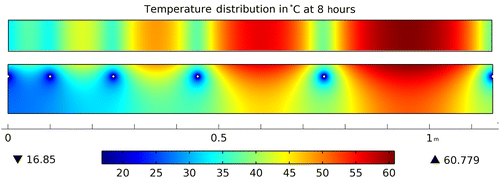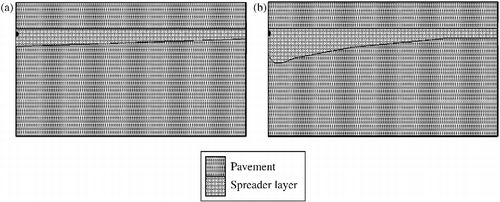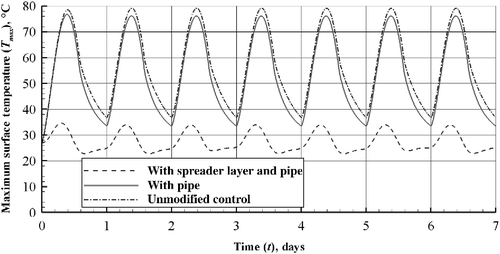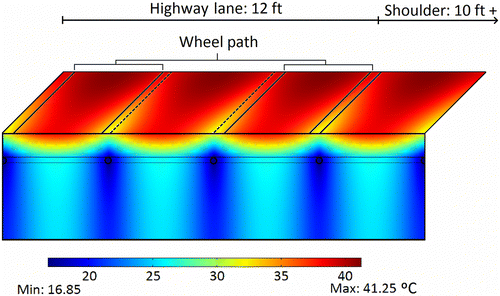Figures & data
Figure 1 Sketch of asphalt solar collector embedded in highway lane. Note: Pipes spaced away from the wheel path.
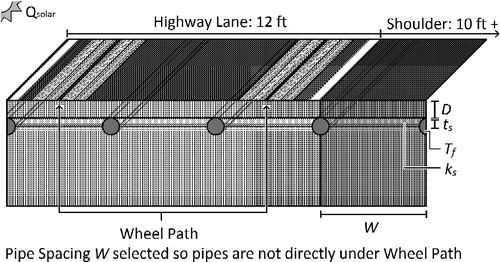
Table 1 Design variables and their respective ranges.
Table 2 Default material properties used, unless otherwise noted.
Table 3 Governing equations and boundary conditions used (unless otherwise noted).
Figure 2 Top and side temperature distribution of (a) unmodified pavement, (b) pavement with pipe, (c) pavement with pipe and spreader layer. Note W = 40 cm, t = 8 h; Q s = 700 W/m2.
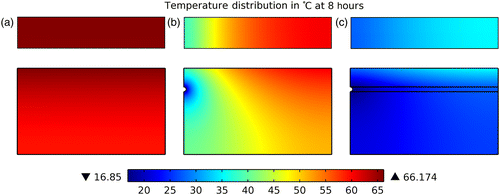
Figure 4 Effects of pipe spacing (W) on maximum temperature (T max). Note: t = 8 h, no spreader layer present.
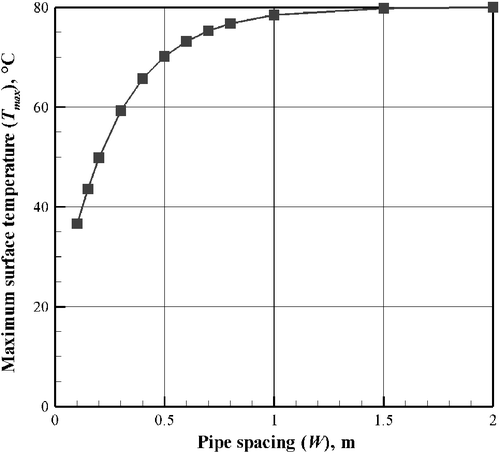
Figure 5 Top and side temperature distribution of pavement with spreader layer depth (a) D = 25 mm, (b) D = 50 mm, (c) D = 75 mm. Note: W = 40 cm, t = 8 h.
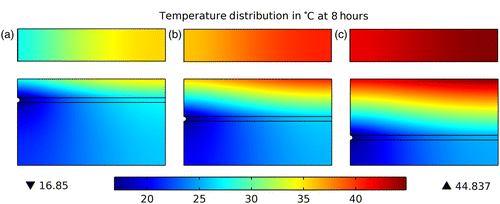
Figure 6 Effects of pipe depth (D) on maximum temperature (T max), with and without spreader layer (t s = 6.4 mm). Note: W = 40 cm, t = 8 h.
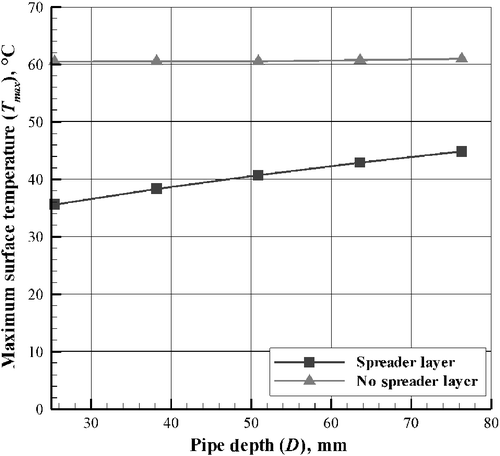
Figure 7 Top and side temperature distribution of pavement with spreader layer thickness, (a) t s = 1.6 mm, (b) t s = 3.2 mm, (c) t s = 6.4 mm. Note: W = 40 cm, t = 8 h.
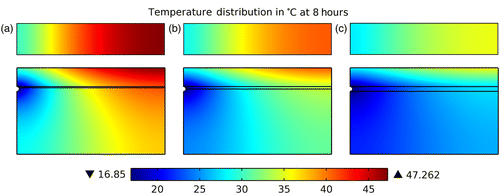
Figure 8 Effects of spreader layer thickness (t s) on maximum temperature (T max), varying pipe spacing (W). Note: t = 8 h.

Figure 10 Heat flux distribution of pavement with spreader layer shape: (a) flat, t s = 6.4 mm, (b) sloped, (c) lipped. Note: W = 40 cm, t = 8 h.

Figure 11 Top and side temperature distribution of pavement with spreader layer shape: (a) flat, t s = 6.4 mm, (b) flat, t s = 9.6 mm, (c) sloped, (d) lipped. Note: W = 40 cm, t = 8 h.

Figure 12 Top and side temperature distribution of pavement with spreader layer conductivity k s = (a) 10 W/m K, (b) 160 W/m K, (c) 500 W/m K. Note: W = 40 cm, t = 8 h, t s = 6.4 mm.

Figure 13 Effects of thermal conductivity of spreader layer (k s) on maximum surface temperature (T max), comparing x-component (k sx ) to y-component (k sy ) of anisotropic materials. Note: W = 40 cm, t = 8 h, t s = 6.4 mm.
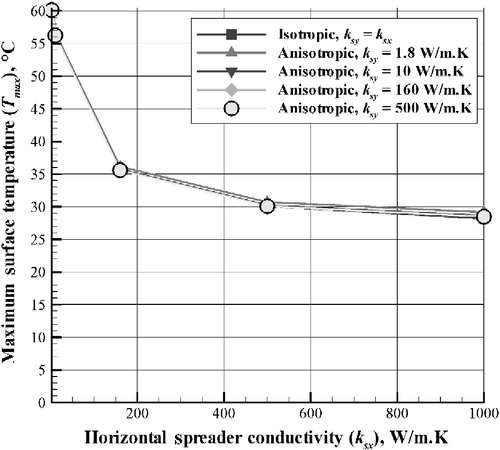
Figure 14 Effects of absorbed solar flux (Q s) on maximum surface temperature (T max), varying spreader thickness (t s). Note: W = 40 cm, t = 8 h.
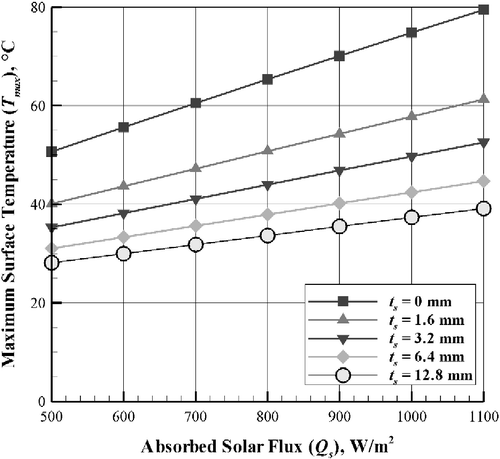
Figure 15 Effect of coolant temperature (T f) on maximum temperature (T max), varying spreader layer thickness (t s). Note: W = 40 cm, t = 8 h.

